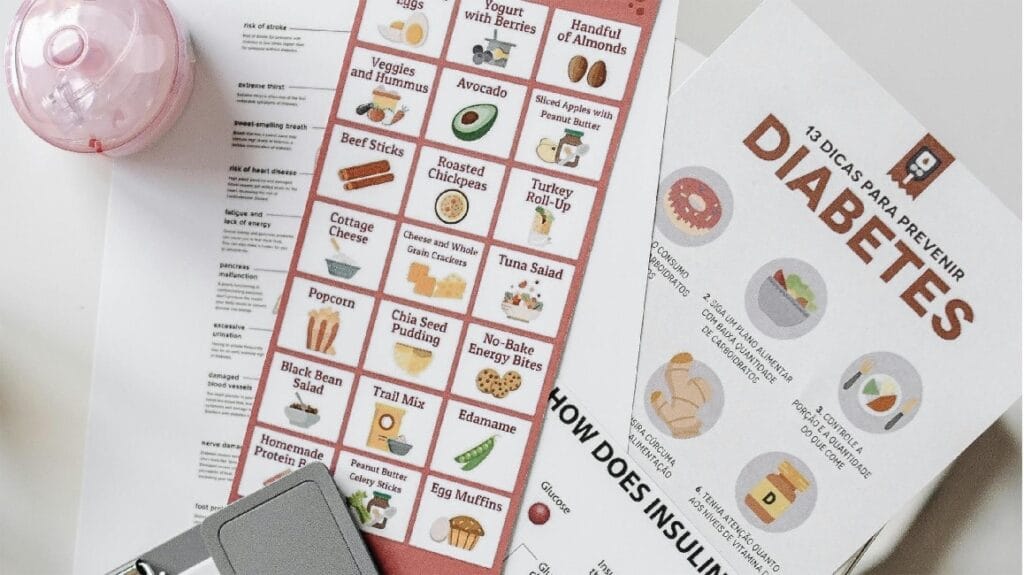The ketogenic (keto) diet has gained significant attention as a potential tool for managing Type 2 diabetes. By drastically reducing carbohydrate intake and increasing healthy fats, the keto diet aims to change the way your body processes energy, potentially improving blood sugar control and aiding in weight loss. But how effective is it really for managing Type 2 diabetes? In this “Keto Diet for Managing Type 2 Diabetes” article, we will explore the basics of the keto diet, how it impacts blood sugar levels, its benefits and risks, and practical tips on implementing it safely for diabetes management.
What is the Keto Diet?
The ketogenic diet is a high-fat, moderate-protein, and low-carbohydrate diet designed to shift your body into a state of ketosis, where it primarily uses fat for energy instead of carbohydrates. This shift occurs when carbohydrate intake is limited to about 20-50 grams per day, forcing the body to burn fat and produce ketones, which serve as an alternative energy source.
Key Components of the Keto Diet:
- High Fat: About 70-75% of daily calories come from fats.
- Moderate Protein: Around 20-25% of daily calories are from proteins.
- Low Carbohydrates: Only 5-10% of daily calories come from carbohydrates.
This macronutrient balance aims to keep blood sugar levels stable, which is particularly beneficial for people with Type 2 diabetes.
How Does the Keto Diet Work?
The keto diet alters the body’s metabolism by significantly reducing the intake of carbohydrates, which are typically broken down into glucose (sugar) for energy. In the absence of sufficient carbohydrates, the liver converts fat into ketones, which the body and brain use as a new energy source.
Effects on Blood Sugar and Insulin:
- Reduced Blood Sugar Levels: Lower carbohydrate intake leads to reduced blood glucose levels, which is beneficial for managing Type 2 diabetes.
- Improved Insulin Sensitivity: By lowering insulin resistance, the keto diet can help your cells better respond to insulin, thereby reducing the amount of insulin needed to manage blood sugar levels.
Benefits of the Keto Diet for Type 2 Diabetes
The ketogenic diet offers several potential benefits for individuals with Type 2 diabetes, including:
1. Improved Blood Sugar Control
- Research shows that a low-carb, high-fat diet can significantly reduce blood glucose levels. Some studies have even suggested that the keto diet can be more effective than a low-fat diet in managing blood sugar.
2. Weight Loss
- Obesity is a significant risk factor for Type 2 diabetes. The keto diet can aid in weight loss by promoting fat burning and reducing appetite. Weight loss can improve insulin sensitivity and lower blood sugar levels.
3. Reduced Dependence on Medication
- Some individuals on the keto diet may be able to reduce their reliance on diabetes medications, including insulin, due to improved blood sugar control.
4. Lowered A1C Levels
- The keto diet has been shown to help lower Hemoglobin A1C levels, a marker of long-term blood sugar control, which is critical in managing Type 2 diabetes.
5. Improved Cardiovascular Health
- By reducing carbohydrate intake and focusing on healthy fats, the keto diet may improve cholesterol levels, lowering triglycerides and increasing HDL (good) cholesterol, which can benefit overall heart health.
Risks and Considerations
While the keto diet has potential benefits, it’s not without risks, especially for people with Type 2 diabetes. Here are some considerations:
1. Ketoacidosis Risk
- Although rare, there is a risk of diabetic ketoacidosis (DKA) in people with diabetes who do not carefully manage their condition while on the keto diet. DKA is a dangerous buildup of ketones in the blood that can be life-threatening.
2. Nutrient Deficiencies
- The restrictive nature of the keto diet can lead to deficiencies in essential nutrients like fiber, vitamins, and minerals. It’s crucial to plan meals carefully to ensure adequate nutrition.
3. Initial Side Effects
- Some people experience “keto flu” during the initial phase of the diet, which can include symptoms like fatigue, headache, dizziness, and irritability as the body adjusts to ketosis.
4. Long-Term Sustainability
- The keto diet can be challenging to maintain over the long term due to its restrictive nature. It’s important to consider whether this diet is sustainable for your lifestyle.
5. Impact on Kidney Health
- High protein intake, often associated with keto, can strain the kidneys, especially in those with pre-existing kidney conditions. Moderating protein intake and focusing on healthy fats is important.
How to Start the Keto Diet for Diabetes Management
1. Consult Your Healthcare Provider
- Before starting the keto diet, it’s essential to consult with your healthcare provider or a registered dietitian, especially if you are taking diabetes medications or have other health conditions.
2. Set Realistic Goals
- Define clear, achievable goals for blood sugar control, weight loss, or other health markers. This will help you stay motivated and track your progress.
3. Plan Your Meals
- Focus on whole foods such as non-starchy vegetables, healthy fats (like avocado, nuts, and olive oil), and moderate amounts of protein (like chicken, fish, and eggs). Avoid processed foods and hidden sugars.
4. Monitor Your Blood Sugar Levels
- Regularly check your blood sugar levels to see how your body responds to the keto diet. This will help you make necessary adjustments to your diet or medication.
5. Stay Hydrated and Consider Electrolyte Supplements
- The keto diet can cause increased urination, which may lead to dehydration and loss of electrolytes. Drinking plenty of water and considering electrolyte supplements can help prevent these issues.
Keto-Friendly Foods and Meal Ideas
Foods to Include:
- Proteins: Chicken, beef, pork, fish, eggs
- Healthy Fats: Avocado, nuts, seeds, olive oil, coconut oil
- Low-Carb Vegetables: Leafy greens, broccoli, cauliflower, zucchini, bell peppers
- Dairy: Cheese, heavy cream, Greek yogurt (unsweetened)
Foods to Avoid:
- Sugary Foods: Cakes, cookies, soda, candy
- Grains and Starches: Bread, pasta, rice, potatoes
- Fruits: Most fruits, especially high-sugar ones like bananas, grapes, and mangoes
- Legumes: Beans, lentils, peas
- Unhealthy Fats: Processed vegetable oils, margarine, trans fats
Sample Meal Plan:
Breakfast:
- Scrambled eggs with spinach and mushrooms cooked in olive oil
- A side of avocado slices
Lunch:
- Grilled chicken salad with mixed greens, cucumber, cherry tomatoes, feta cheese, and olive oil dressing
Dinner:
- Baked salmon with a side of roasted cauliflower and broccoli drizzled with butter
Snacks:
- A handful of almonds or walnuts
- Cheese sticks or cucumber slices with hummus
Monitoring and Adjusting Your Diet
Track Your Progress
- Use a food diary or app to track your meals, macronutrient intake, and blood sugar levels. This can help identify foods that work best for you and those that may cause spikes in blood sugar.
Adjust as Needed
- The keto diet isn’t one-size-fits-all. Be prepared to make adjustments based on your blood sugar readings, weight loss progress, and how you feel overall.
Stay Flexible
- While the keto diet can be effective, it’s essential to remain flexible and open to modifying your approach if it isn’t working as expected. Consulting a healthcare provider for tailored advice can make a significant difference.
Frequently Asked Questions
Q: Can I follow the keto diet if I’m on insulin?
A: Yes, but it’s crucial to work closely with your healthcare provider to adjust your insulin dosage as needed. The keto diet can lower blood sugar levels, which may require changes in your medication.
Q: How quickly will I see results on the keto diet for diabetes management?
A: Results can vary, but some people notice improvements in blood sugar control and weight loss within a few weeks. Consistency and monitoring are key to long-term success.
Q: Is the keto diet safe for everyone with Type 2 diabetes?
A: The keto diet isn’t suitable for everyone, especially those with certain health conditions like kidney disease or a history of eating disorders. Always consult with a healthcare professional before starting the diet.
Conclusion
The ketogenic diet offers a promising approach to managing Type 2 diabetes through improved blood sugar control, weight loss, and enhanced insulin sensitivity. However, it’s not without risks, and careful planning is essential to ensure it’s safe and effective for your individual needs. By working closely with your healthcare provider and making informed dietary choices, you can potentially reap the benefits of the keto diet for diabetes management.


